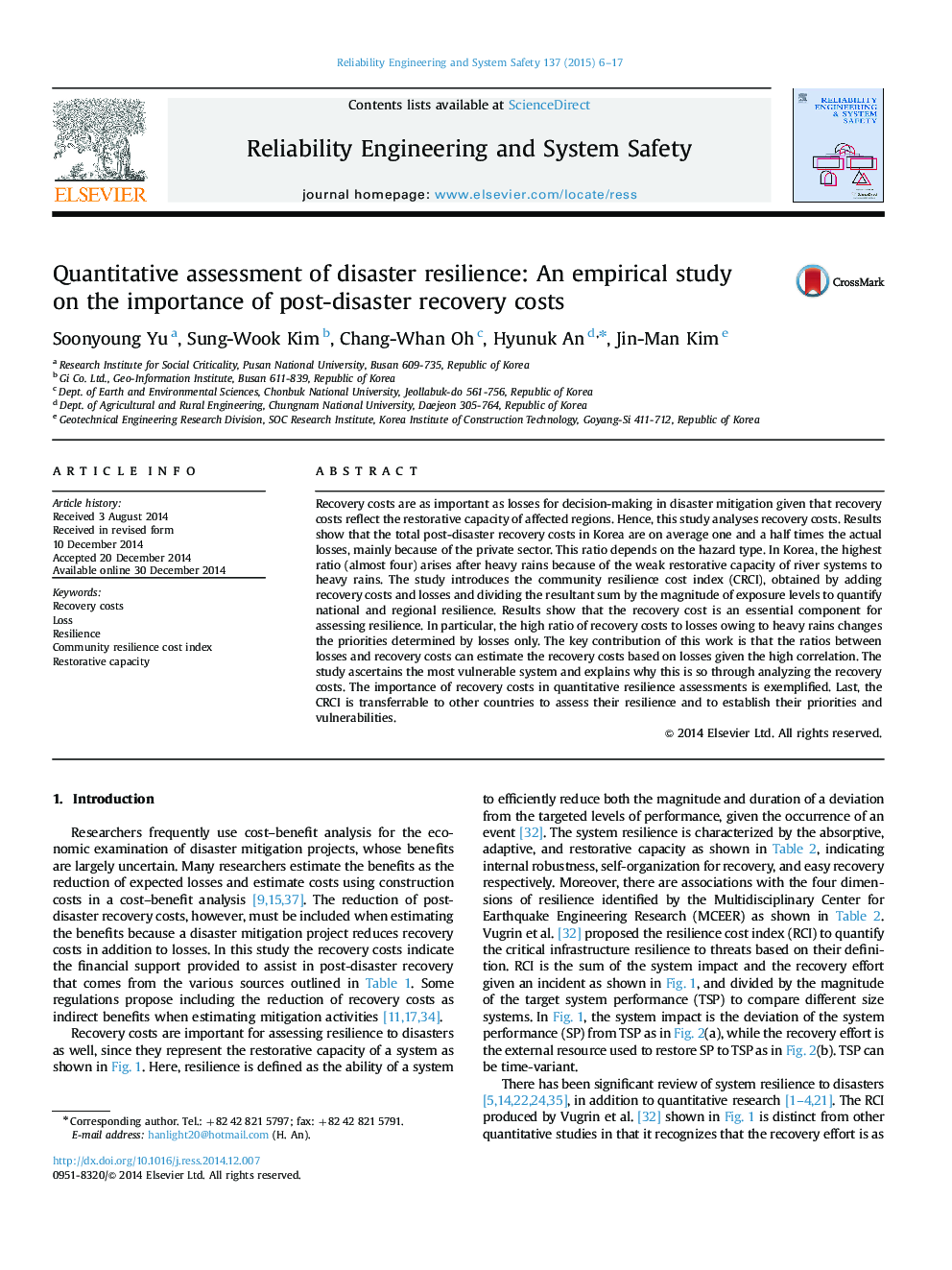| کد مقاله | کد نشریه | سال انتشار | مقاله انگلیسی | نسخه تمام متن |
|---|---|---|---|---|
| 805521 | 1468233 | 2015 | 12 صفحه PDF | دانلود رایگان |
• The linear regression between recovery costs and losses is analyzed.
• Total recovery costs are on average 1.5 times larger than losses in Korea.
• Heavy rain events cause the highest ratio of recovery costs to losses.
• The high ratio is due to the less restorative capacity of river system to heavy rain.
• Recovery costs are as important as losses to assess resilience.
Recovery costs are as important as losses for decision-making in disaster mitigation given that recovery costs reflect the restorative capacity of affected regions. Hence, this study analyses recovery costs. Results show that the total post-disaster recovery costs in Korea are on average one and a half times the actual losses, mainly because of the private sector. This ratio depends on the hazard type. In Korea, the highest ratio (almost four) arises after heavy rains because of the weak restorative capacity of river systems to heavy rains. The study introduces the community resilience cost index (CRCI), obtained by adding recovery costs and losses and dividing the resultant sum by the magnitude of exposure levels to quantify national and regional resilience. Results show that the recovery cost is an essential component for assessing resilience. In particular, the high ratio of recovery costs to losses owing to heavy rains changes the priorities determined by losses only. The key contribution of this work is that the ratios between losses and recovery costs can estimate the recovery costs based on losses given the high correlation. The study ascertains the most vulnerable system and explains why this is so through analyzing the recovery costs. The importance of recovery costs in quantitative resilience assessments is exemplified. Last, the CRCI is transferrable to other countries to assess their resilience and to establish their priorities and vulnerabilities.
Journal: Reliability Engineering & System Safety - Volume 137, May 2015, Pages 6–17
